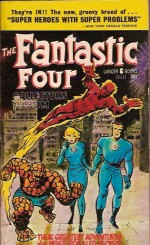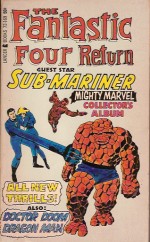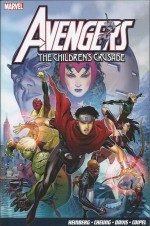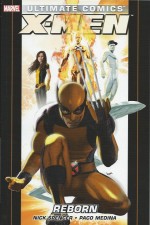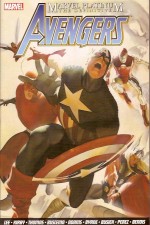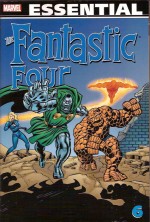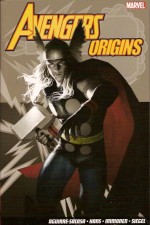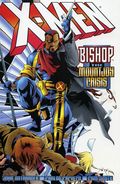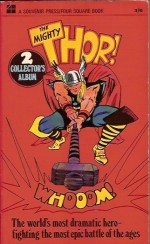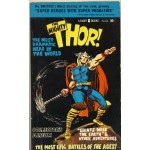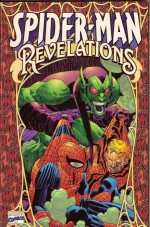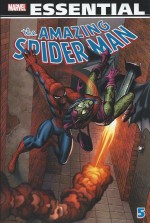
By Stan Lee, Roy Thomas, Gerry Conway, Gil Kane, John Romita & various (Marvel)
ISBN: 978-0-7851-1865-7
The Amazing Spider-Man was always a comic-book that matured with or perhaps just slightly ahead of its fan-base.
This fifth exceptionally economical monochrome volume of chronological web-spinning adventures sees the World’s Most Misunderstood Hero through another rocky period of transformation as the great second era of Amazing Arachnid artists moved inevitably to a close. Although the elder John Romita would remain closely connected to the Wall-Crawler’s adventures for a little time yet, these tales would be his last long run as lead illustrator on the series.
Stan Lee’s scripts were completely in tune with the times – as glimpsed by a lot of kid’s parents at least – and the burgeoning use of pure soap opera plots kept older readers glued to the series even if the bombastic battle sequences didn’t.
Thematically, there’s still a large percentage of old-fashioned crime and gangsterism and a dependence on mystery plots. The balance of costumed super-antagonists was finely balanced with thugs, hoods and mob-bosses, but these were not the individual gangs of the Ditko days.
Now Organised Crime and Mafia analogue The Maggia were the big criminal-cultural touchstone as comics caught up with modern movies and the headlines. Moreover during this period Lee finally defied Comics Code Authority mandates to tell a powerful tale of drug abuse which would (along with DC’s Green Lantern tales dealing with the same issue) force the industry’s censoring body to expunge the ludicrous dictat that comics could never mention narcotics under any circumstances…
This volume, reprinting Amazing Spider-Man #90-113, spans November 1970 to October 1972 and even includes some stunning art-in-progress and unfinished Gil Kane pages from issues #98 and 102 to edify and astound the readers, so be prepared to be utterly amazed…
Following directly on from ‘Doc Ock Lives!’ – which ended the previous Essential Edition on a cataclysmic cliffhanger – the action here opens with ‘And Death Shall Come!’ by Stan Lee, pencilled by Gil Kane & inked by John Romita Sr., wherein the multi-limbed menace ran riot in the city and Peter Parker’s attempts to stop him led to the death of a beloved cast member…
With the tragic demise, Spider-Man became a wanted fugitive and Jonah Jameson began backing “Law and Order†election hopeful Sam Bullitt in a campaign ‘To Smash the Spider!’, utterly unaware of the politician’s disreputable past, but the secret came out in #92’s ‘When Iceman Attacks’.
The ambitious demagogue convinced the youngest X-Man that Spider-Man had kidnapped Parker’s paramour Gwen Stacy but the Wondrous Wall-Crawler’s explosive battle against the mutant exposed the corrupt and explicitly racist Bullit in an all-out action extravaganza featuring some of the best action art of the decade by two of the industry’s greatest names.
Romita resumed pencilling with issue #93, which saw the return of a forgotten foe in ‘The Lady and… The Prowler!’. Hobie Brown was a super-burglar gone straight, but when he saw that the Amazing Arachnid was wanted, he too was all to ready to believe the media hype and not his old benefactor…
Amazing Spider-Man #94 (Lee, Romita & Sal Buscema) offered a new glimpse of the fabled origin of the hero as part of a dynamic dust-up with the Beetle ‘On Wings of Death!’ after which Peter headed for London to woo his estranged girlfriend Gwen, who had fled the manic violence of America.
Sadly ‘Trap for a Terrorist’ found the city under threat of destruction from radical bombers, which only Spider-Man could handle, so she returned home, never knowing Parker had come after her. Everything was forgotten in the next issue when deeply disturbed and partially amnesiac industrialist Norman Osborn remembered he was the Green Goblin and once more attacked Peter in #96’s ‘…And Now, the Goblin!’ by Lee, Kane & Romita.
Lee had long wanted to address the contemporary drugs situation in his stories but was forbidden by Comics Code strictures. When the US Department of Health, Education and Welfare approached him to tackle the issue he produced the three-part Goblin tale. When it was declined Code approval he went ahead and published it anyway…
Although the return of the madman who knew all Spider-Man’s secrets was the big fan-draw the real meat of the tale was how Osborn’s son Harry – a perfectly normal rich white kid – could be drawn into a web of addiction, abuse and toxic overdose…
Frank Giacoia began inking Kane with the second instalment ‘In the Grip of the Goblin!’ as the elder Osborn ran riot, almost killing the wall-crawler and preparing for his final deadly assault even as his son lay dying, before the saga spectacularly concluded with ‘The Goblin’s Last Gasp!’ wherein the villain’s deeply buried paternal love proved his undoing and Parker’s salvation…
Amazing Spider-Man #99 ‘A Day in the Life of…’ was an action-packed palate-cleanser with Peter and Gwen finally getting their love-life back on track, only marginally marred by a prison breakout which was easily quelled by the Arachnid Avenger, but the anniversary 100th issue ‘The Spider or the Man?’ proved to be a game-changing shocker as, determined to retire and marry, Peter attempts to destroy his powers with an untested serum.
The result was a hallucinogenic trip wherein Kane & Giacoia got to draw an all-out battle between Spidey and a host of old enemies and a waking nightmare when Peter regained consciousness and discovered he had grown four extra arms…
With #101 Roy Thomas stepped in as scripter for ‘A Monster Called… Morbius!’, as the eight-limbed Parker desperately sought a way to reverse his condition and stumbled across a murderous costumed horror who drank human blood. To make matters worse old foe The Lizard turned up, determined to kill them both…
Amongst the many things banned by the Comics Code in 1954 were horror staples vampires and werewolves, but the changing comics tastes and rising costs of the early 1970s were seeing Superhero titles dropping like flies in snowstorm. With interest in suspense and the supernatural growing, all companies were pushing to re-establish scary comics again and the covert introduction of a “Living Vampire†here led to another challenge to the CCA, the eventually revision of the horror section of the Code and the resurgent rise of supernatural heroes and titles.
For one month Marvel also experimented with double-sized comicbooks (DC’s switch to 52-page issues lasted almost a year: August 1971-June 1972 cover-dates) and Amazing Spider-Man #102 featured an immense, three-chapter blockbuster beginning with ‘Vampire at Large!’ as octo-webspinner and anthropoid reptile joined forces to hunt the bloodsucker after discovering a factor in the vampire’s saliva which could cure both part-time monsters’ respective conditions.
‘The Way it Began’ diverged from the tale to present the tragic secret origin of Nobel Prize winning biologist Michael Morbius and how be turned himself into a haunted night horror before ‘The Curse and the Cure!’ brought the tale to a blistering conclusion and restored the status quo.
Designed as another extra-long epic, ‘Walk the Savage Land!’ began in the now conventional sized #103 but was sliced in half and finished as #104 ‘The Beauty and the Brute’ in #104. When the Daily Bugle suffered a financial crisis, Jameson took Peter Parker and Gwen Stacy on a monster hunt to the Lost World under the Antarctic, encountering not only dinosaurs and cavemen but also noble savage Ka-Zar, perfidious villain Kraven the Hunter and even terrifying alien baby Gog in a fabulous pastiche and homage to Willis O’Brien’s King Kong from Thomas, Kane & Giacoia.
Capitalising on an era rife with social unrest and political protest, Stan Lee returned in #105 with ‘The Spider Slayer!’ as the New York City police put spy cameras on every rooftop and discredited technologist Spencer Smythe resurfaced with an even more formidable anti-Spider-Man robot for Jamison to set against the Wall-crawler. The story also featured the release of Harry Osborn from drug rehab and old Parker gadfly Flash Thompson came back from Vietnam, but the big shock was discovering the once beneficent Smythe had gone bonkers…
Responsible for the Police spy-eyes too, Smythe had photographed Spidey without his mask and in ‘Squash! Goes the Spider!’ (triumphantly pencilled by the returning Romita) the Professor sold out old employer Jameson, allied with criminal gangs and attempted to plunder the city. When the Amazing Arachnid tried to stop the banditry he found himself facing the ultimate Spider-Slayer before valiantly battling his way to victory in ‘Spidey Smashes Thru!’
The secret of Flash Thompson began to unravel in issue #108’s ‘Vengeance from Vietnam!’ (with Romita inking his own pencils) as the troubled war hero revealed an American war atrocity which had left a peaceful in-country village devastated, a benign mystic comatose and set a vengeful cult upon the saddened soldier’s guilt-ridden heels, which even all Spider-Man’s best efforts could not deflect or deter.
The campaign of terror was only concluded in #109 when ‘Enter: Dr. Strange!’ saw the Master of the Mystic Arts divine the truth and set things aright, after which #110’s ‘The Birth of… the Gibbon!’ found the world-weary wall-crawler battling shunned and lonely outcast Martin Blank, whose anthropoid frame and lack of friends had made his life a living hell…
The Gibbon was back a month later when Kraven brainwashed the hapless outcast ‘To Stalk a Spider!’ in a tale which saw the beginning of young Gerry Conway’s tenure on the title, whilst #112 saw another periodic crisis of faith for Peter Parker when ‘Spidey Cops Out!’ found the hero ready to chuck it all in until another nightmarish old adversary resurfaced as part of a burgeoning gang war…
We end as we began with #113 and ‘They Call the Doctor… Octopus!’ (Conway & Romita with art assistance from Tony Mortellaro and Jim Starlin) as the city is plunged into chaos when the multi-limbed madman squares off against the mysterious gang-boss Hammerhead with a rededicated but fearfully overmatched Spider-Man caught in the middle…
For the cataclysmic outcome you’ll need to see volume 6…
Despite that major qualification this is still a fantastic book about an increasingly relevant teen icon and symbol. Spider-Man at this time became a crucial part of many youngsters’ lives and did so by living a life as close to theirs as social mores and the Comics Code would allow.
Blending cultural veracity with stunning art and making a dramatic virtue of the awkwardness, confusion and sense of powerlessness that most of the readership experienced daily resulted in an irresistibly intoxicating read, delivered in addictive soap-opera instalments, but none of that would be relevant if the stories weren’t so compellingly entertaining. This intoxicating transitional book is Stan Lee’s Spider-Man at his very best and also shows the way in which the hero began to finally outgrow his (co)creator.
© 1970, 1971, 1972, 2011 Marvel Entertainment Group, Inc. All rights reserved.

